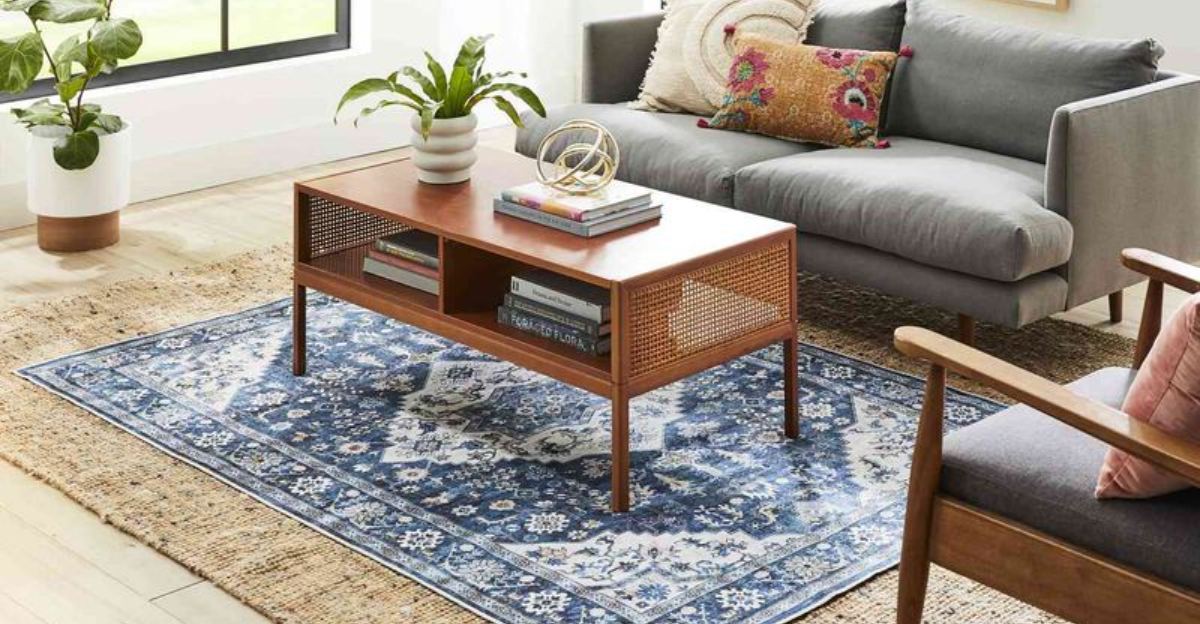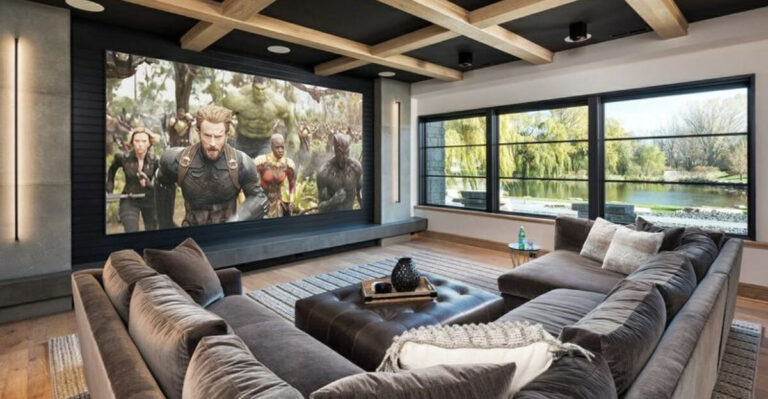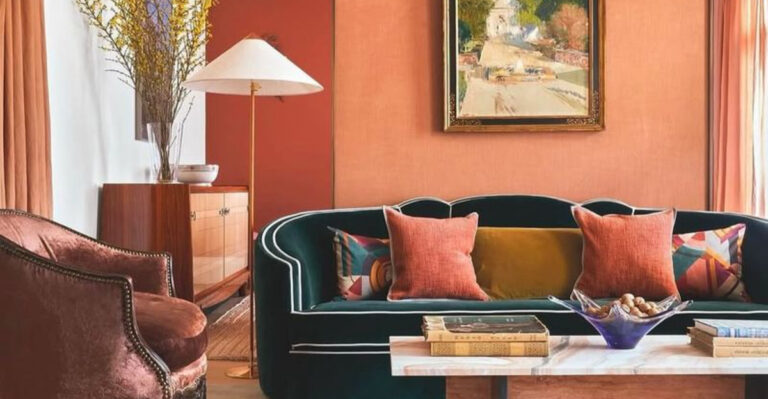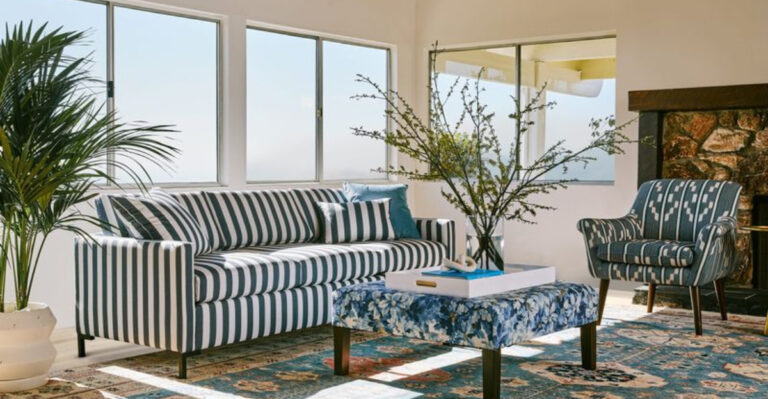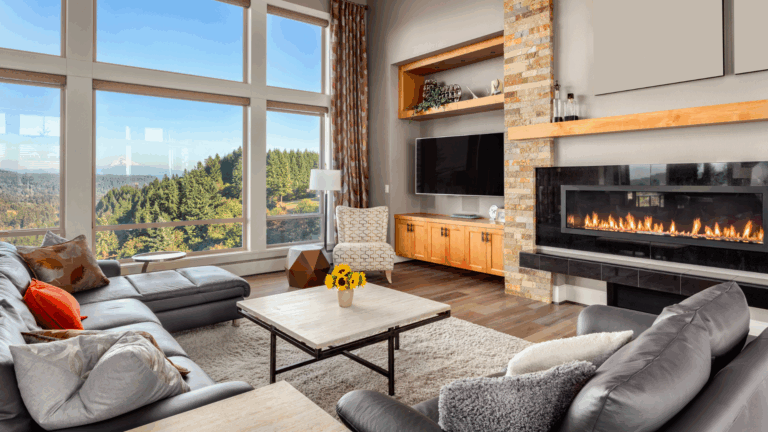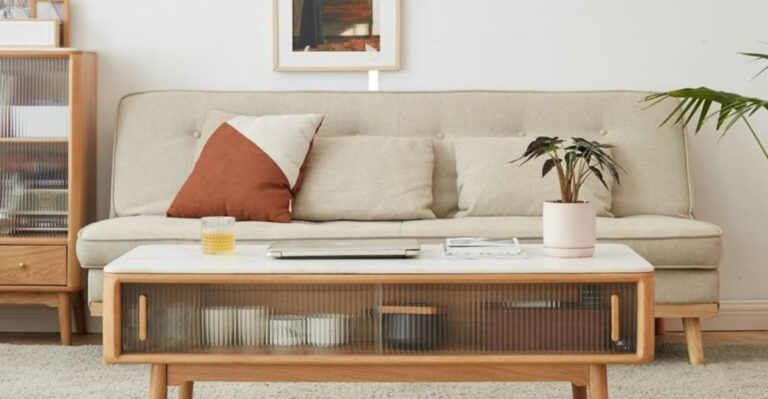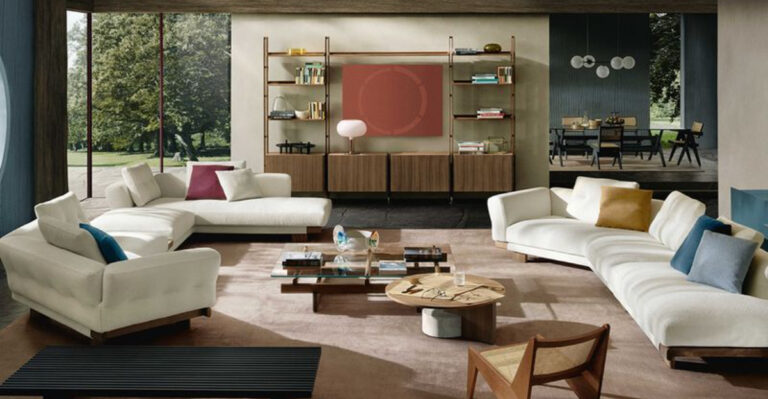15 Key Points That Say How Much Of Your Couch Should Sit On The Rug
Getting your couch-to-rug ratio right can completely transform how your living room feels. Many homeowners struggle with this seemingly small detail, but it actually makes a huge difference in creating balance and flow.
The right placement grounds your furniture arrangement and ties everything together visually, while poor positioning can make even expensive pieces look awkward and disconnected.
1. Front Legs Only Rule
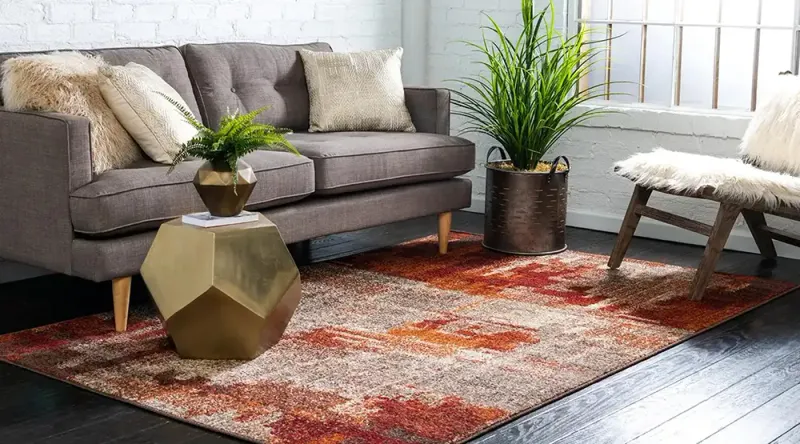
The most universally flattering approach places just the front legs of your couch on the rug, leaving the back legs on the floor. This creates visual interest while clearly defining your seating area.
The partial placement also allows you to use a smaller rug while still achieving a polished look. For average-sized living rooms, this approach hits the sweet spot between aesthetics and practicality.
2. All Four Legs For Luxury
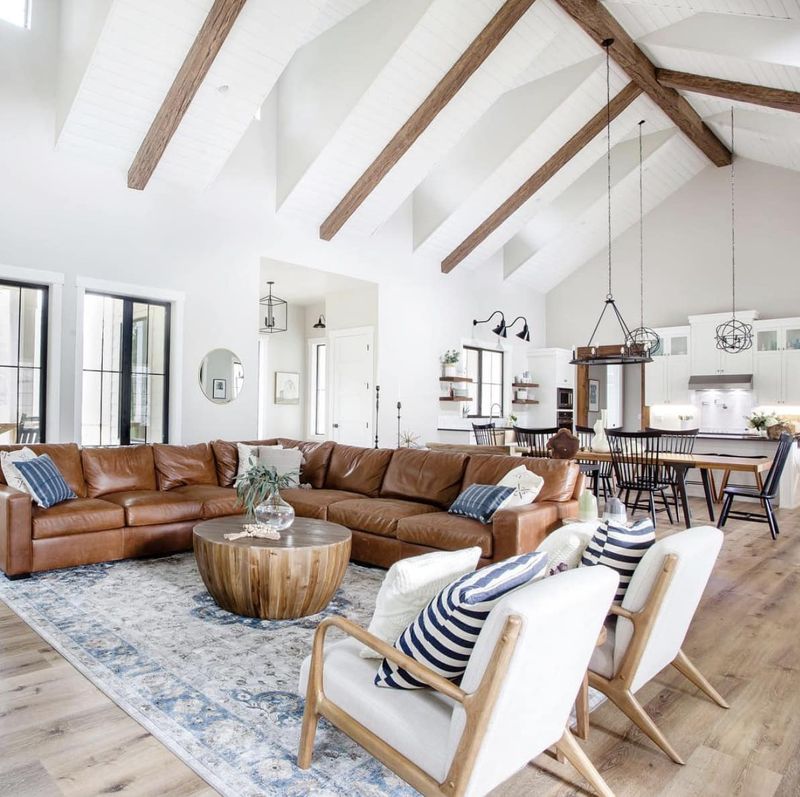
Placing your entire couch on the rug creates an undeniably luxurious feel. The fully-grounded placement works especially well in spacious rooms where the rug can extend at least 18 inches beyond all sides of the sofa.
This arrangement visually separates conversation areas in open floor plans. The extra rug real estate comes with a higher price tag, but the unified, intentional look often justifies the splurge.
3. Floating Arrangement Magic
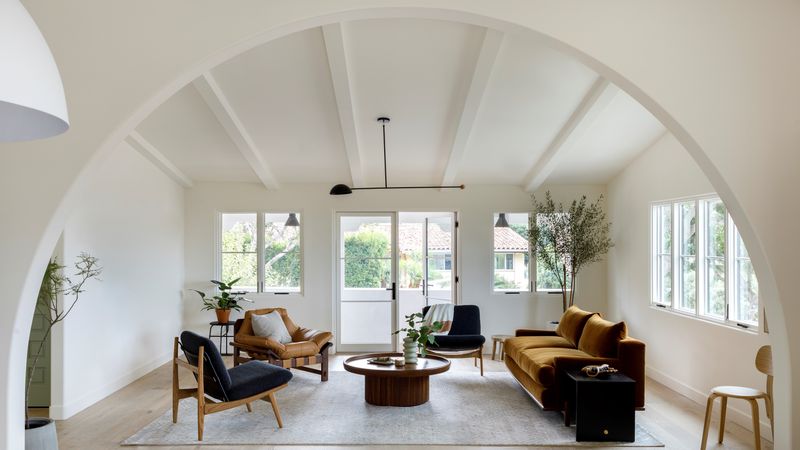
For floating furniture arrangements (couches that don’t touch walls), you absolutely need all furniture legs on the rug. This anchors pieces that might otherwise look like they’re drifting aimlessly through your space.
The rug should extend at least 6-8 inches beyond the furniture. Without walls providing boundaries, the rug becomes the visual foundation that holds everything together and defines the conversation area.
4. No-Leg Zone Warning
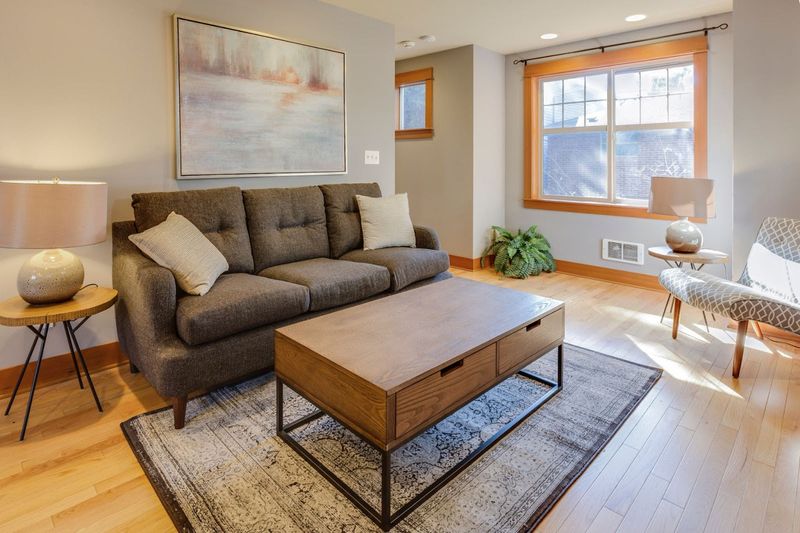
Keeping your couch completely off the rug creates a disjointed, unfinished appearance that designers universally caution against. The rug looks like an island, disconnected from the furniture around it.
If you’re stuck with a too-small rug, consider replacing it or using it in another room. Small rugs work better under coffee tables or in bedrooms where they don’t need to engage with larger furniture pieces.
5. Six-Inch Minimum Overlap
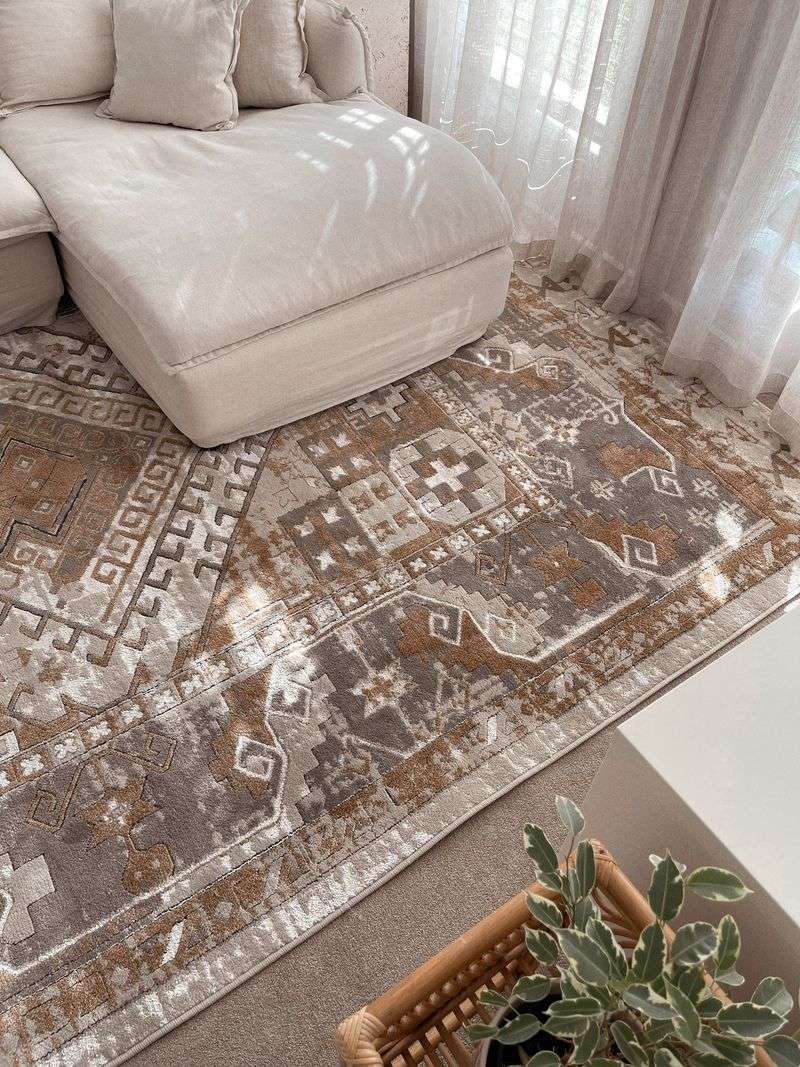
For any couch partially on a rug, aim for at least 6 inches of overlap. This prevents the awkward look of a couch barely touching the rug’s edge, which can feel accidental rather than intentional.
The 6-inch rule ensures the connection between furniture and rug appears deliberate. Think of it as establishing a relationship – just touching fingertips isn’t as convincing as a proper handshake that shows real connection.
6. Round Rug Revolution
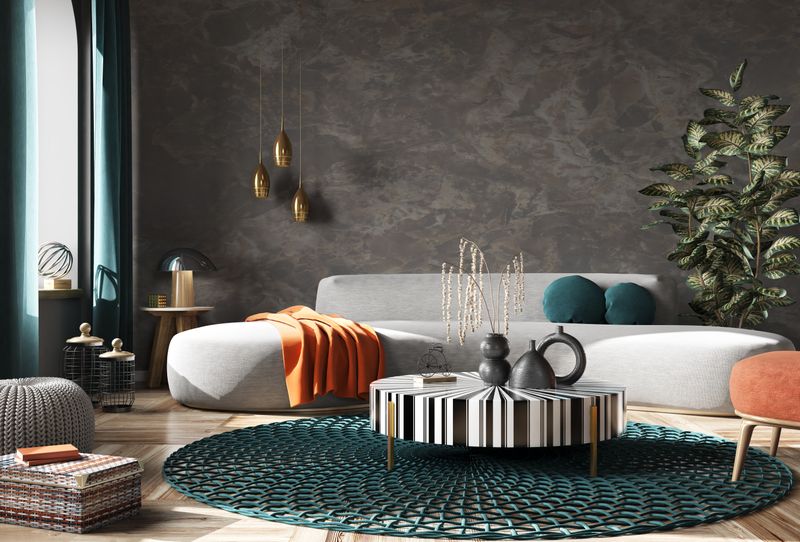
Round rugs change the standard rules dramatically. With circular rugs, aim for consistent placement around all sides – either all furniture legs on or all front legs on.
The curved edge creates a softer boundary that draws the eye inward toward the center of your arrangement. Round rugs work particularly well with floating furniture groupings or when you want to soften a room with too many straight lines and rectangular elements.
7. Side Table Synchronization
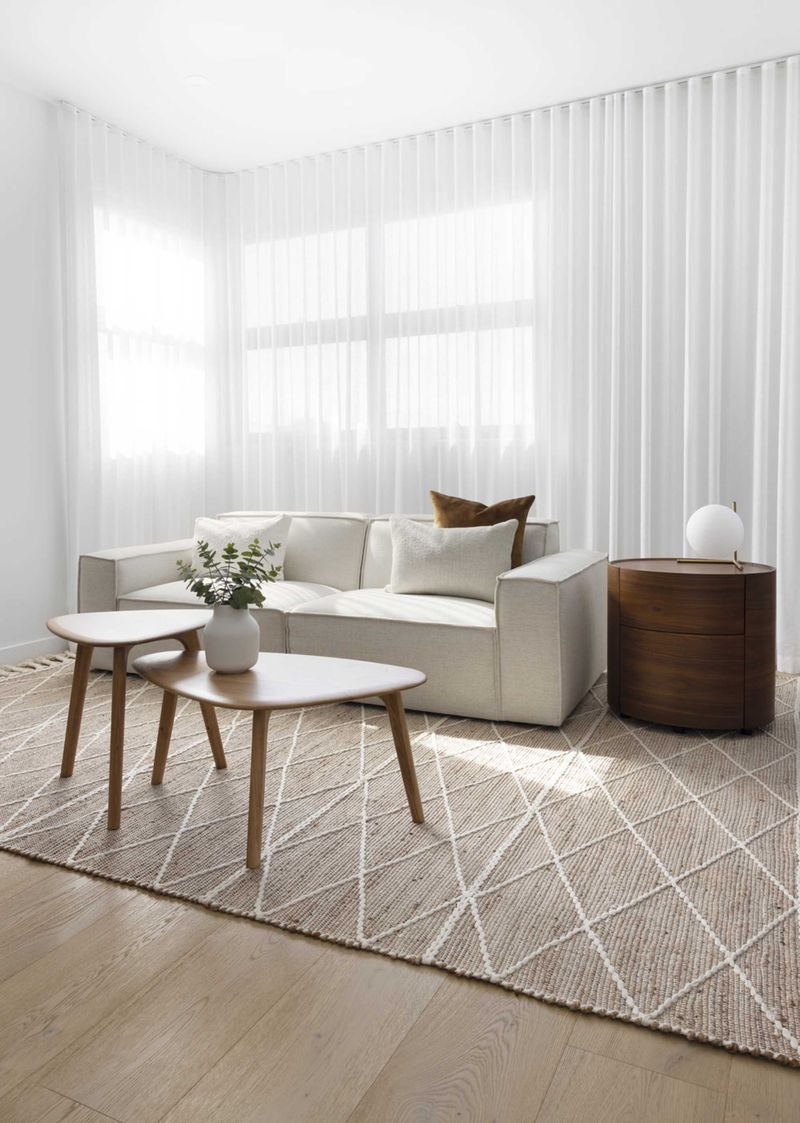
Extend your rug far enough that side tables can join the party along with your couch. Having tables half-on, half-off a rug creates instability both visually and physically.
For a cohesive look, ensure side tables either sit completely on the rug or completely off it. This creates a more intentional, thought-out appearance and prevents wobbling furniture, which happens when table legs straddle different surfaces.
8. Layering Solution For Small Rugs
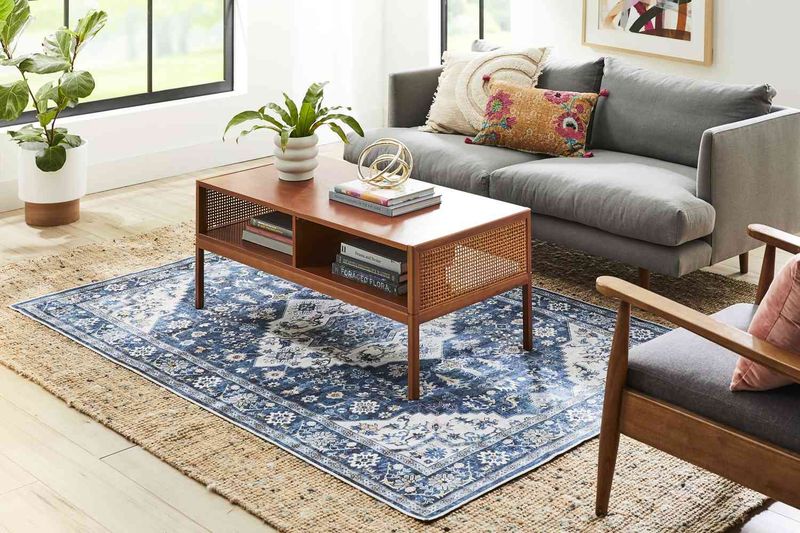
Already own a too-small rug you love? Try layering it over a larger, less expensive natural fiber rug like jute or sisal. This clever hack lets you keep your beloved statement piece while still following proper furniture placement rules.
The bottom layer should be large enough to accommodate all furniture according to standard guidelines. The top layer becomes an accent that adds color, pattern, or texture without having to carry the entire spatial burden.
9. Traffic Flow Considerations
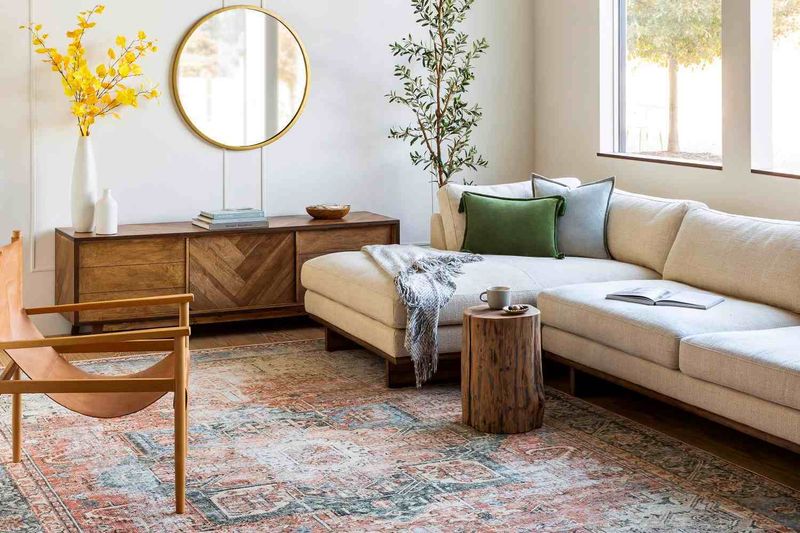
High-traffic pathways sometimes override standard rug rules. If people regularly walk between your couch and coffee table, ensure the rug extends well beyond both to prevent awkward half-on, half-off stepping.
For heavily used rooms, the rug should cover the entire conversation area plus at least 18-24 inches beyond where people walk. Comfort and function occasionally trump perfect aesthetic alignment, especially in family homes with lots of activity.
10. Wall-Hugging Couch Exception
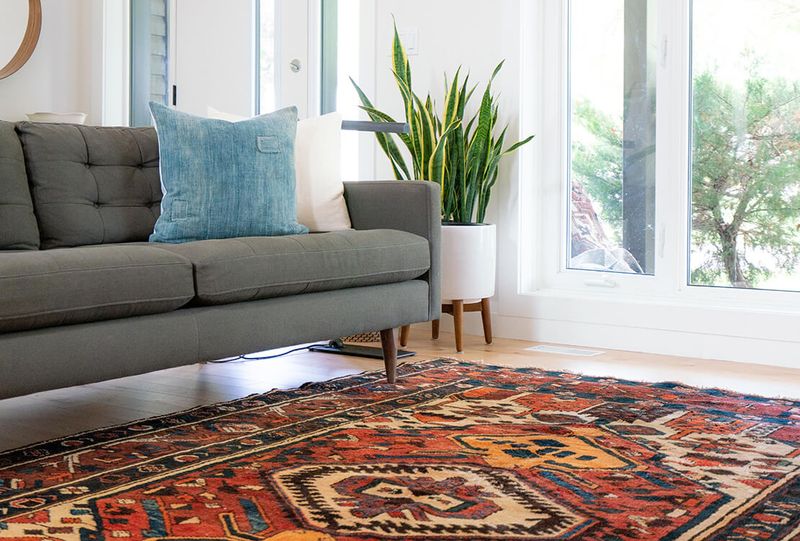
Couches pushed against walls follow slightly different guidelines. Since the back of the couch is already anchored by the wall, having just the front legs on the rug works perfectly.
The rug should still extend beyond the sides of the couch by at least 6-8 inches. This arrangement creates depth while maximizing floor space, making it ideal for smaller rooms where every inch counts.
11. L-Shaped Sectional Strategy
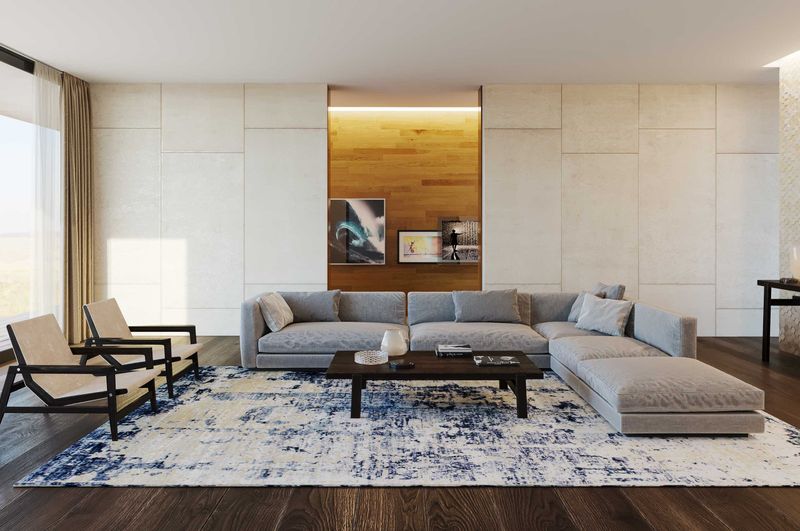
Sectionals require specially-sized rugs that accommodate their unique footprint. Ideally, all front legs of both sections should rest comfortably on the rug with consistent overlap.
Rectangular rugs usually work better than square ones with sectionals. The rug should extend at least 12-18 inches beyond the chaise portion to avoid looking like it’s barely containing the furniture. Uneven placement looks haphazard and undermines the sectional’s cozy, unified appeal.
12. Size Ratio Mathematics
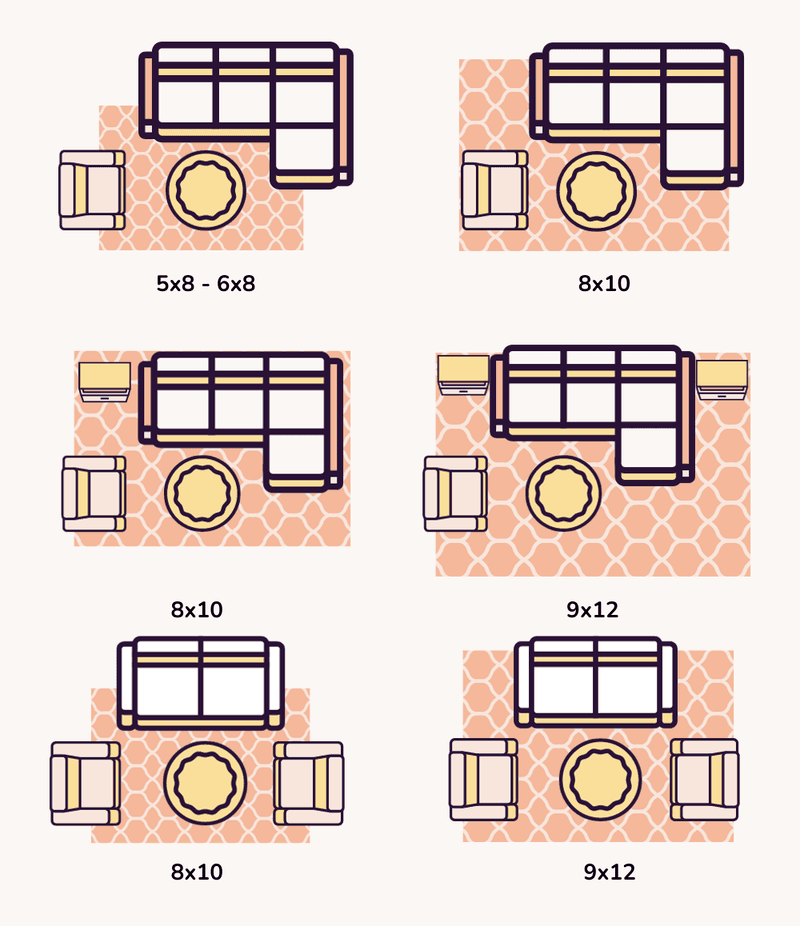
Professional designers use a simple formula: your rug should be approximately 2 feet wider than your sofa on each side. For the length, aim for 18-24 inches of rug extending beyond the front and back of furniture.
This creates balanced proportions that frame your seating area perfectly. Undersized rugs make furniture appear larger and more cumbersome than it actually is, while properly-scaled rugs create harmony and make the entire room feel more spacious.
13. Rug Texture Impact
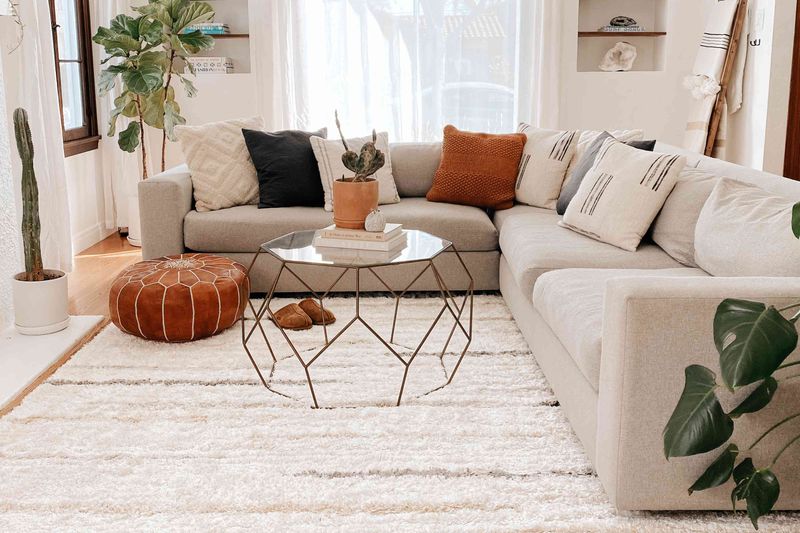
Thicker, plusher rugs create stronger visual boundaries, making the couch-on-rug relationship more pronounced. With high-pile rugs, precise placement becomes even more important since the height difference is so noticeable.
Flat-weave or low-pile rugs offer more forgiveness with placement rules. The texture affects not just the feel underfoot but also how obvious the transition appears where furniture meets rug, making texture an important factor in your decision.
14. Decorative Style Alignment
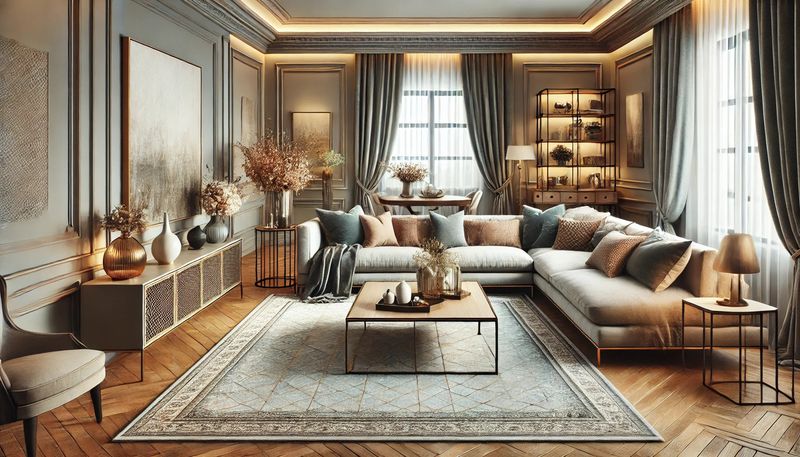
Different interior styles suggest different rug placements. Traditional and formal settings favor the all-legs-on approach for a symmetrical, orderly appearance. Modern and bohemian styles often embrace the front-legs-only rule for a more relaxed, dynamic feel.
Contemporary designs might play with asymmetrical placement intentionally. Always consider your overall decorative direction when deciding how much couch should sit on your rug – the placement should reinforce your chosen aesthetic.
15. Floor Protection Bonus
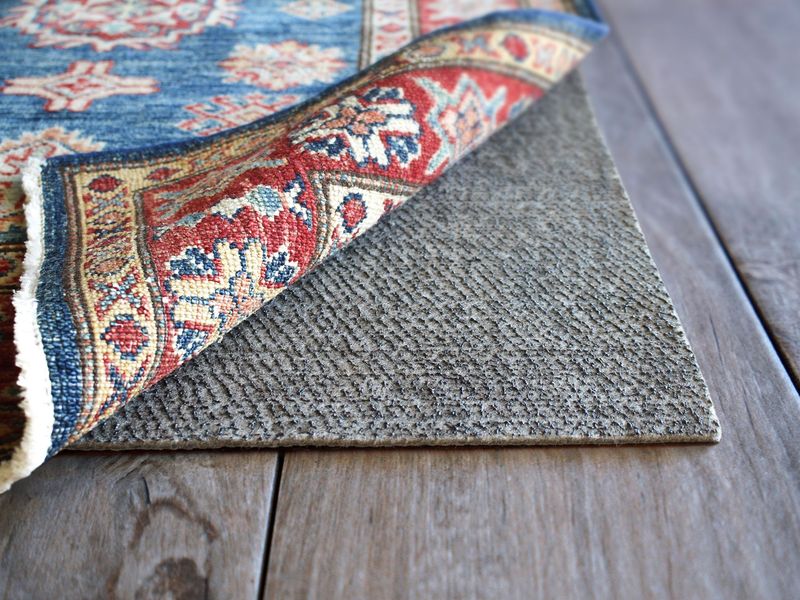
In rental properties or homes with delicate flooring, rugs serve a protective purpose beyond aesthetics. Extend your rug further under heavy furniture to prevent scratches, dents, and wear patterns.
For maximum floor protection, choose rugs with proper padding underneath. The practical benefit of floor preservation might justify sizing up to a larger rug than purely decorative considerations would suggest, especially in high-use areas or with antique or engineered wood floors.

